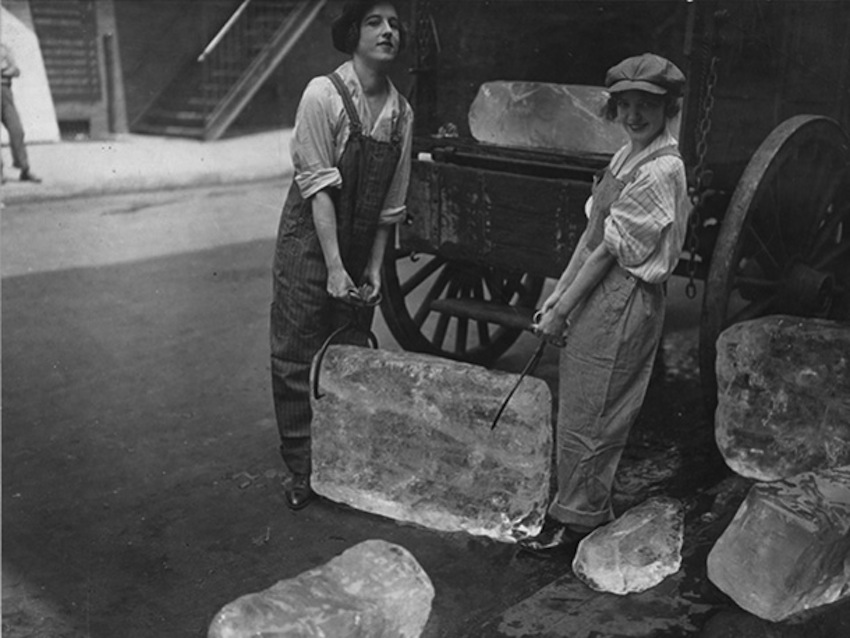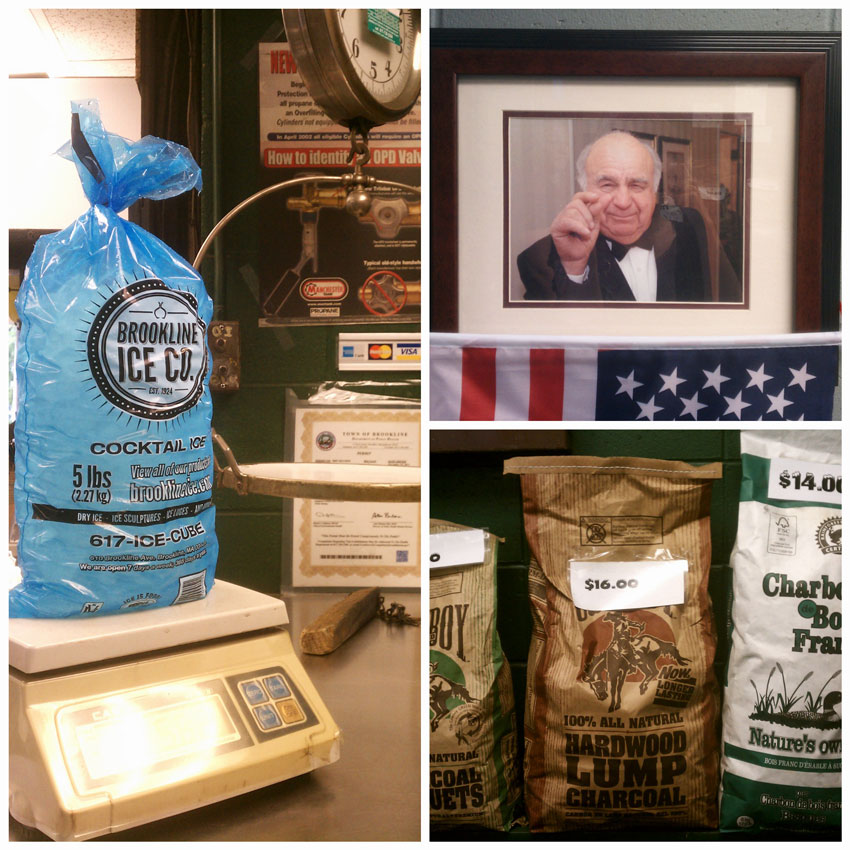Supply Chain: Meet Brookline Ice & Coal, the Company Keeping Boston Cool Since 1924
Welcome to Supply Chain, where we go behind the plate to get a feel for the day-to-day of Boston’s most relied-upon restaurant purveyors.
I’m not going to lie to you. I can’t say that I stumbled upon Brookline Ice & Coal as the next natural installment of this series, even though, truly, they are. Quite simply, it has been hot as hell in my Jamaica Plain apartment this week, and hanging out in a freezer talking about the one thing I can’t seem to make enough of—ice—sounded liked a pretty damn good idea to me.
Here’s what I never gave much thought to, prior to showing up at the loading docks on Brookline Avenue (right next to the auto shop and the vet’s office): the sheer amount of ice that is a part of every breakfast, lunch, and dinner service around town has to come from somewhere. And by a staggering margin, it mostly comes from these guys.
When I first call the offices, the thermostat in my apartment reads 94 degrees. The voice on the other end, after initially mistaking me for a telemarketer and trying to hang up, sounds out of breath and stressed.
“The phones don’t stop during a heat wave,” says Adrianna Signore, a fourth-generation member of the family business, when I finally make it on the next rainy afternoon. “Most people never think of ice until it gets hot, but for us, we have to start worrying about blackouts and electrical issues around town. You have to be in panic mode, because as soon as that power goes out, it’s too late.”
She glances outside, where water droplets cling to every surface, and sighs peacefully. “This is so quiet,” she says. “Whenever it rains, it’s the only chance I get to catch up on anything.”
As one might imagine, Brookline Ice & Coal caters to a large range of industries, but their largest clientele turns out to be restaurants. Signore explains that while their business with restaurants originally stemmed from ice for drinks, soon they started offering restaurant-specific items like gourmet charcoals and smoking chips. They’ve also evolved into one of the top providers of ice sculptures around town. Signore pulls out her phone, the case bedecked with all manner of mustaches, to show me a mammoth water bar she set up this morning.
Dry ice, she adds, is also a major facet of their business. In the event of an emergency, they are the only thing standing between a client and a warm walk-in full of rotting meat.
“If their freezer goes down, we have to be ready to bail them out. We keep dry ice in stock, but we’re having to bring it in from out-of-state constantly because it’s in such high demand,” she says. “We’ll get phone calls at 4 in the morning from chefs saying, ‘My freezer just went out, the guy can’t come for four days.’ That’s where we come in.”
They work with a private wood supplier in Vermont, who provides huge truckloads of various wood pieces—logs, chips, whatever species and size a chef might request. They also deal in propane, which particularly endears them to their food truck clientele. When I ask her to name a few restaurant accounts off the top of her head, a few big ones come to the front: Capital Grille, Legal’s, Cafeteria, a handful of catering companies, most of the hotels in town.
Ice sculptures and dry ice aside, most of their shipments are more practical and intended for everyday use. If you’ve ever watched, transfixed, as your bartender inserts a block of ice in between that heated, gravity-driven contraption, then pulls out a seamless sphere for your whiskey on the rocks, you’ve probably seen a specialty Brookline Ice product in motion: they supply those perfect 2-inch cubes that fit snugly into the machine. Ever made an ice run at Tedeschi’s? That’s most likely their product as well.
The ice trade, as it were, was actually kicked off by a Boston businessman named Frederic Tudor in 1806. At that point, cocktails were traditionally served warm, even in the sweltering summer months—the justification being that warm drinks produced sweat, which drew heat from the body. Right. By the 1830s, Tudor had figured out how to actually ship the stuff without it disappearing into a puddle, and had begun selling it to cafes and rich households, so they might chill their drinks. The idea caught on like wildfire, since, as we know all too well now, nothing is better than a cold drink in summer.
The great-grandfather of the Signore bloodline started the company in 1924, supplying ice that he harvested from the ponds in summer, just as Tudor did, and oil and charcoal in winter. By the mid-20s, icy beverages and foods were already a given, since the technological advances of Tudor’s time had brought costs down and made having access to ice a reality for more households. A large part of Signore Sr.’s gig was delivering unwieldy blocks to residential ice boxes around town from his original outpost in downtown Brookline. As the neighborhood developed, the company set up shop on the fringes.
Adrianna, along with her sister Jennifer, are the only family members working there full-time today; her mother and father are retired, and her grandfather (top-right in the photo below, who came in to the office every day until the ripe old age of 87) recently passed away. In an effort to continue evolving the 89-year old company, the latest generation of Signores has taken it upon themselves to elevate the practice of supplying ice: this past April, they were certified by the International Packaged Ice Association (IPIA) whose credo, “Ice is Food,” serves to remind people that ice needs guidelines for proper handling and purity of product just as food does. They are also Kosher certified, in case you were wondering.
On the way out, we make a stop in the ice room, an attic-sized workspace with a snowy floor. Blocks of rough ice shards are piled up against one wall and a chainsaw lies dormant next to the ice-cutting machine, which allows Signore to computer-generate designs beforehand. The raw material—say, a 300-pound bar of ice—is then cut down to the precise measurements, allowing them to go as complex as the client wants. Their exactitude has paid off: they’ve been contracted to build the furniture for the impending Frost Ice Bar, due in Faneuil Hall any day now.
“Designing the furniture is really interesting, especially in a space like that,” she says, sounding excited at the prospect. “You usually have to consider drainage when you do a sculpture, but all of these will be preserved in that environment.”
Luges, always a popular feature, are a standard offering. She tells me they put out around 5,000 luges a year; the one currently in the room is a likeness of a naked woman’s torso.
“Oh, we do a whole series of naughty luges,” she giggles. “And this is the toned down lady luge. There’s an even filthier version! Penis luges too, those are popular.”
As I concentrate on walking (read: sliding) gingerly back to the door, I notice she’s in heels.
“Stilettos actually work really well in here,” she admits, “Because they dig in really well. But everyone always thinks it’s funny when they come in here and I’m standing there in my heels holding a chainsaw.”





